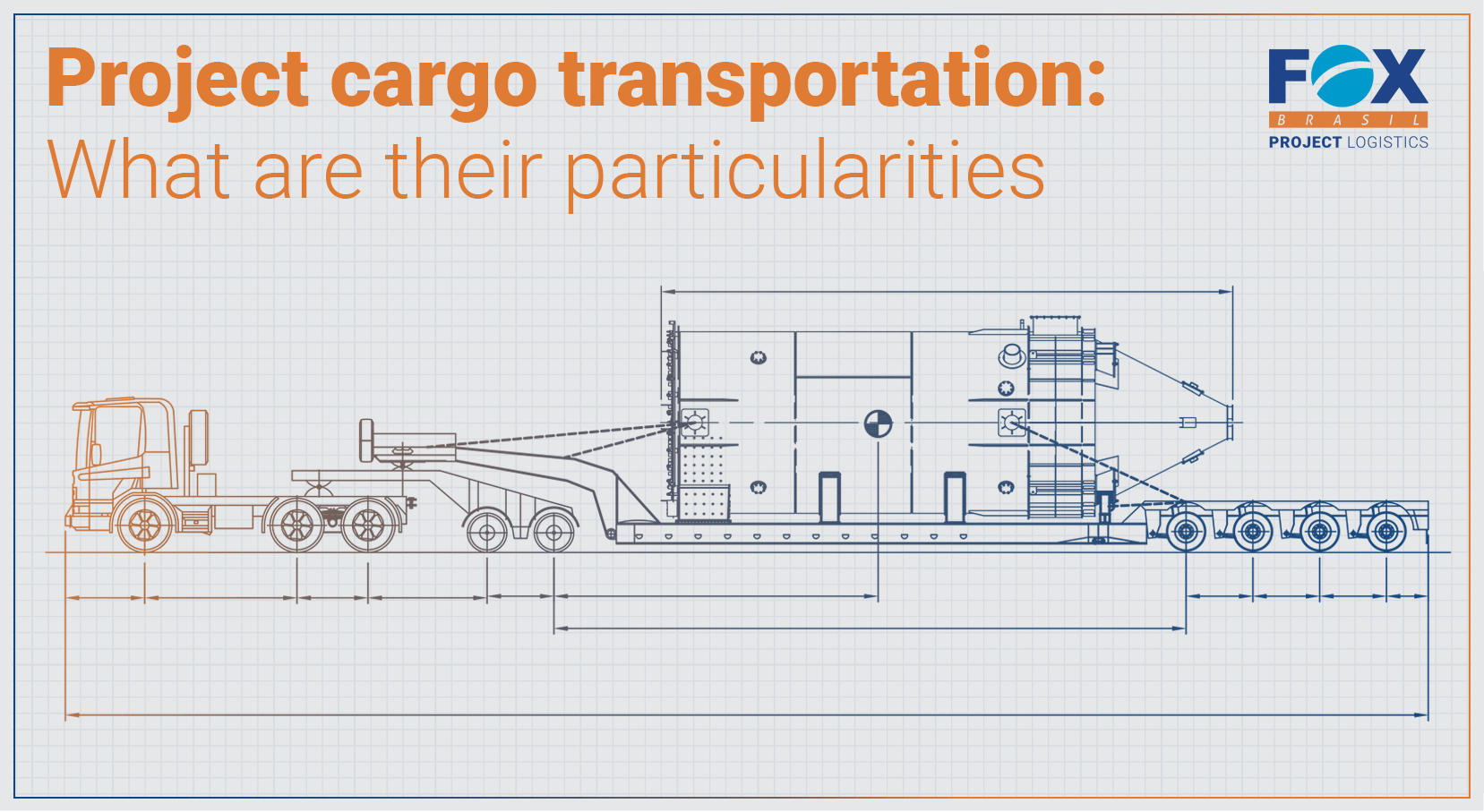Project cargo transportation: What are their particularities?

Logística de Projetos
Handling project cargo transportation demands can be very challenging. The reason these kinds of operations are so complex is that they usually involve the movement of loads with peculiar characteristics. Whether a cargo exceeds in size, shape or weight, simply using standard transportation methods to transport it won’t do the job.
When it comes to project cargo transportation, you must ensure the operation is carried out effectively and in accordance with the safety regulations for that specific load. In order to do so, it is important to know the particularities behind the transportation of each different project cargo.
Aiming to help you with that, below we have listed the main types of project cargo existent and what kind of caution the transportation of each one requires. Check it out!
The particularities of each project cargo transportation
Overweight and Oversized cargoes
These are the most common types of merchandise transported as project cargo. If a cargo exceeds in weight or size, it immediately calls for special transportation conditions in all the stages of the operation. Starting with the loading/unloading processes, which require the appropriate equipment to safely place and remove the cargo from the vessel, such as cranes, forklifts and special lifting devices.
On top of that, transporting overweight and/or oversized cargoes involve an entire engineering analysis, as well as structural and geometric studies to define the most adequate route, shipping conditions and assembly works to ensure a safe freight. Some examples of overweight/oversized loads are construction machines (cranes, front loaders, backhoes, etc.), pre-built homes, containers, and construction elements (bridge beams, generators, windmill propellers, rocket stages, industrial equipment).
Sensitive goods
Sensitive cargo is the type of merchandise that is more delicate and requires a certain level of special consideration and handling during all phases of the delivery process ? loading, in transit, and off-loading. Sensitive goods are often considered project cargo because their shipment involves in-depth planning and customized transportation conditions, which are defined according to the content of the cargo and its degree of sensitiveness. Some examples of caution measures for transporting safety goods are:
- extra stuffing to secure the cargo;
- weight distribution to prevent cargo shifting;
- temperature control if/as required;
- appropriate ventilation measures.
Break Bulk
Another type of project cargo is the Break Bulk, which consists of a system that transports cargo as separate pieces rather than in containers. Break Bulk is a common type of transportation when it comes to handling structures that are too big to move altogether, such as industrial plants or machines, equipment, vehicles and components, steel girders and structural steel, yachts, masts or train carriages.
Although most project cargoes fit in one of the categories above, each case is different and requires a customized solution. The best way to do your project cargo operation is counting on the assistance of a freight forwarder with specialized knowledge in handling this kind of project.
FOX Brasil offers state-of-the-art infrastructure and a team with years of experience in developing project cargo transportation solutions to attend the most diverse industries. As part of our service, we will analyze all the specifics of your demand and build a plan that saves costs, provides certainty, and avoids unexpected events – making sure your cargo is transported safely and on schedule.
Click here to see what makes us experts in project cargo transportation or get in touch with our team for more information!
